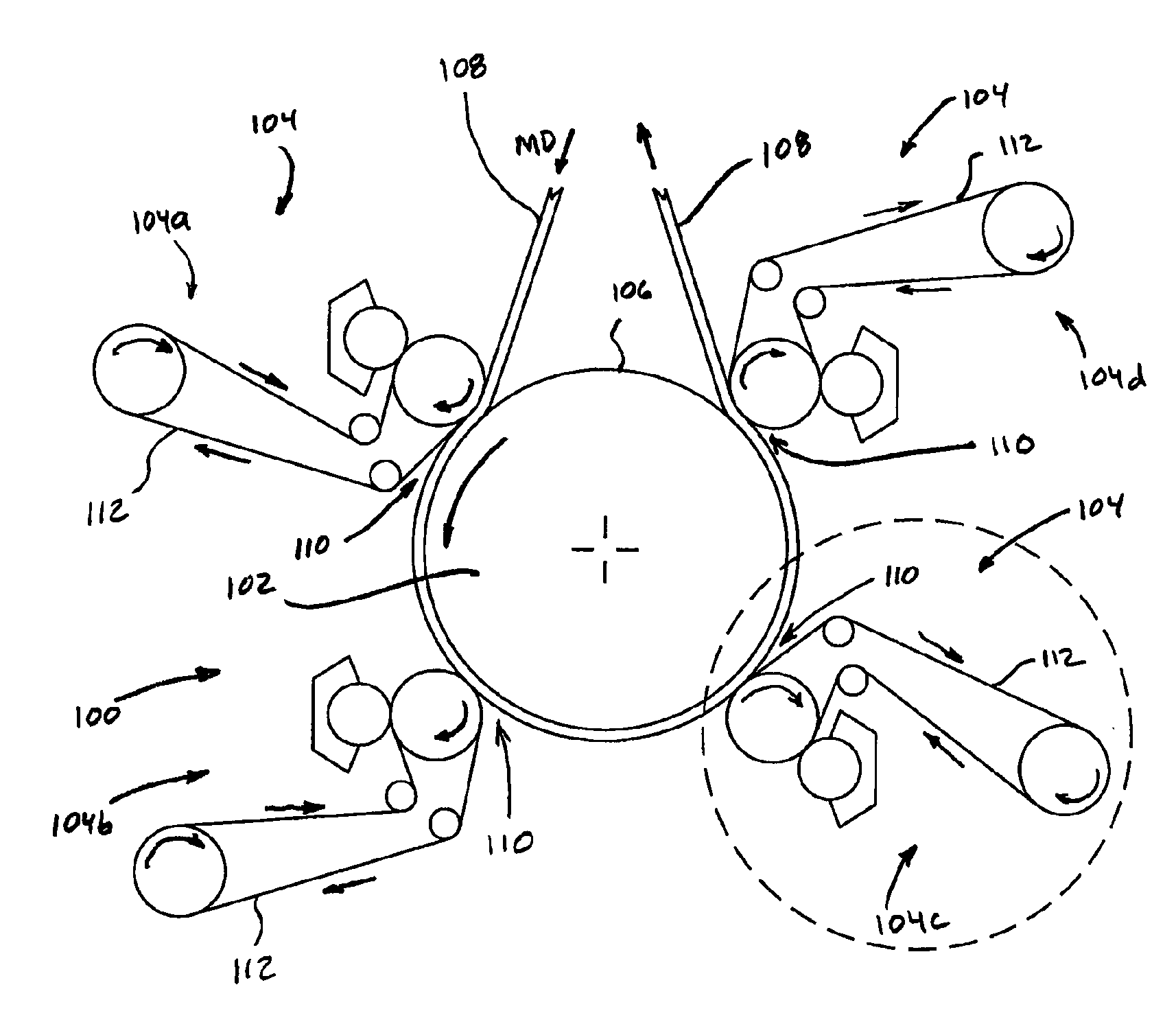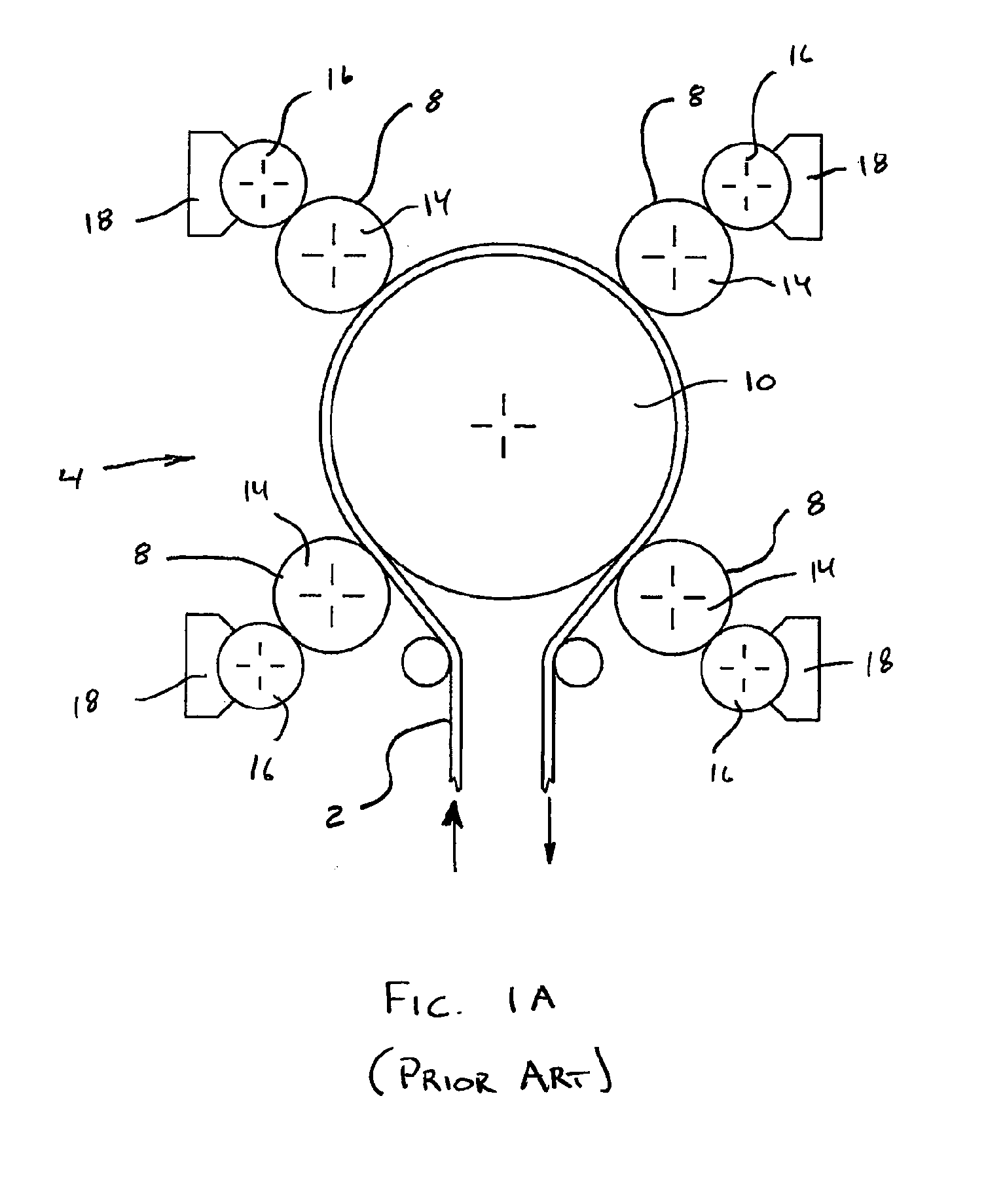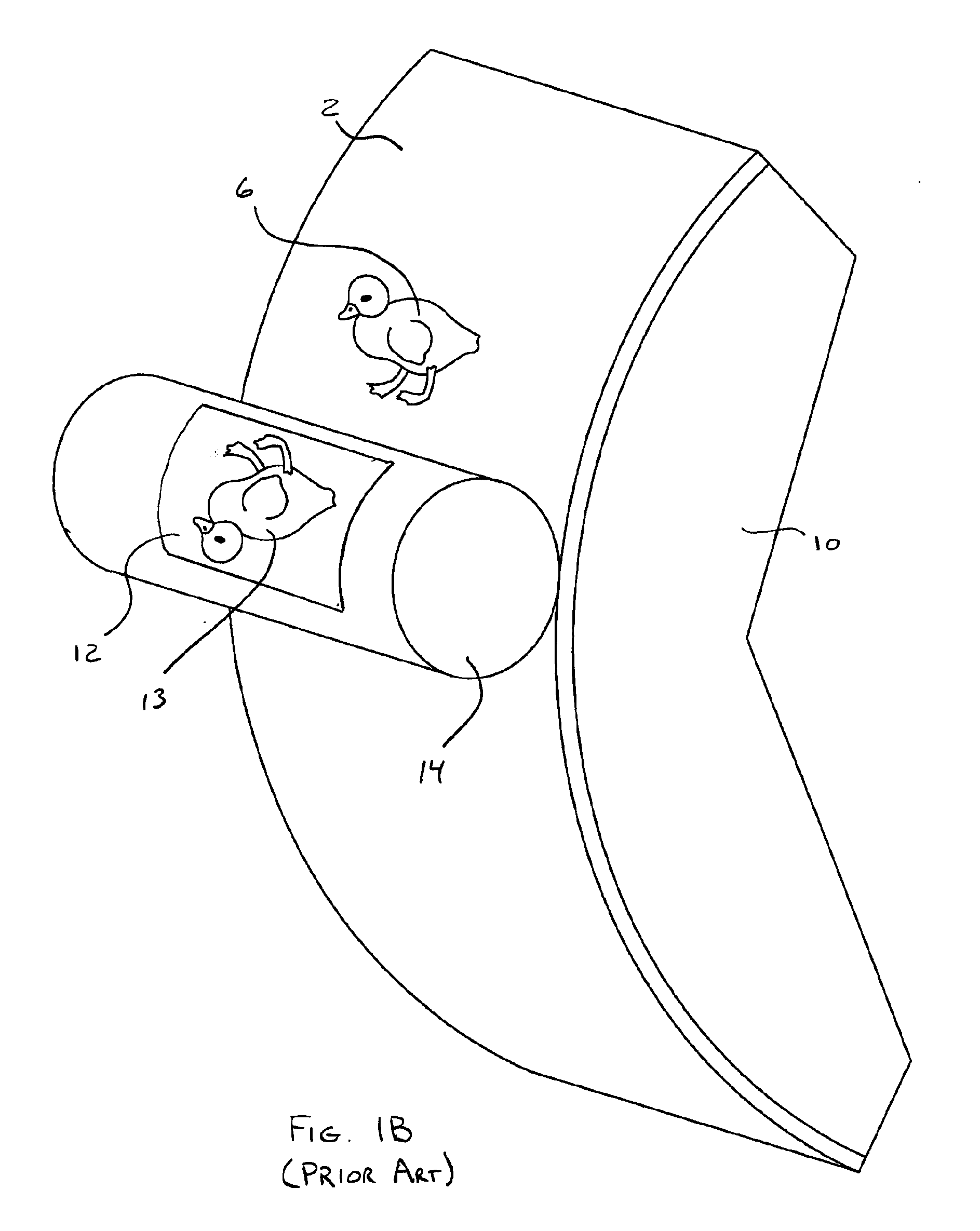Absorbent Articles Having Distinct Graphics And Apparatus And Method For Printing Such Absorbent Articles
a technology of absorbent articles and graphics, applied in the field of printing apparatuses and methods for printing absorbent articles, can solve the problems of requiring relatively low print and/or manufacture speed, requiring relatively expensive processes and equipment, and limiting the number of different printed graphics
- Summary
- Abstract
- Description
- Claims
- Application Information
AI Technical Summary
Benefits of technology
Problems solved by technology
Method used
Image
Examples
Embodiment Construction
[0031]The following term explanations may be useful in understanding the present disclosure:
[0032]“Absorbent article” is used herein to refer to consumer products whose primary function is to absorb and retain soils and wastes. Non-limiting examples of incontinent absorbent articles include diapers such as PAMPERS diapers, training and pull-on pants such as PAMPERS FEEL 'N LEARN and EASY UPS, adult incontinence briefs and undergarments such as ATTENDS adult incontinence garments, feminine hygiene garments such as panty liners, absorbent inserts, and the like such as ALWAYS and TAMPAX, all sold by The Procter & Gamble Company.
[0033]“Diaper” is used herein to refer to an absorbent article generally worn by infants and incontinent persons about the lower torso.
[0034]The term “disposable” is used herein to describe absorbent articles which generally are not intended to be laundered or otherwise restored or reused as an absorbent article (e.g., they are intended to be discarded after a s...
PUM
 Login to View More
Login to View More Abstract
Description
Claims
Application Information
 Login to View More
Login to View More - R&D
- Intellectual Property
- Life Sciences
- Materials
- Tech Scout
- Unparalleled Data Quality
- Higher Quality Content
- 60% Fewer Hallucinations
Browse by: Latest US Patents, China's latest patents, Technical Efficacy Thesaurus, Application Domain, Technology Topic, Popular Technical Reports.
© 2025 PatSnap. All rights reserved.Legal|Privacy policy|Modern Slavery Act Transparency Statement|Sitemap|About US| Contact US: help@patsnap.com



